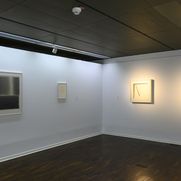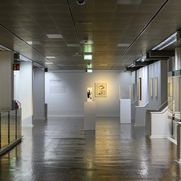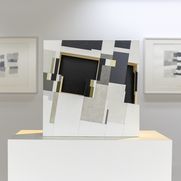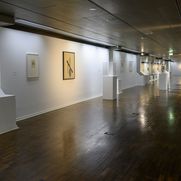In reaction to the exhibition Stardust by the sculptor Michael Beutler (16.07-25.09.2022), who artistically appropriates the spaces of the Wilhelm-Hack-Museum with his site-specific sculptural modules, the showpiece is dedicated to the multi-layered nature of the concept of space in art history from modernism to the present day.
Vision first leads the gaze back to the 1920s, to the geometric composition studies of László Moholy-Nagy, El Lissitzky, Alexander Rodchenko, and Lyubov Sergeyevna Popova, who deliberately elude a rational grasp of space. Re-examining boundaries, lines, and surfaces, the works lead visitors to spatial visions and architectures that do not originate from architects but from visual artists and are not subject to architectural feasibility. Thus, László Moholy-Nagy questions the generally accepted definition of space as volume, that is, as a fixed enclosure defined by length, width, height, and demands its abolition: “what one generally knows about ‘space’ is little suited to give it a real graspability, a tangible existence.” [1929]
In contrast, the Licht und Schatten [Light and Shadow] exhibition area presents works from the collection that explore light and shadow as fundamental elements of spatial perception. Space is constructed through the interplay of light and shadow, as well as the angle of view that we as viewers take to the works or how we move in front of them.
The exhibition was curated by Anne Bossok.




